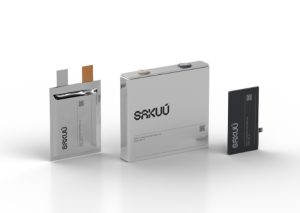
Citing Chinese news sources, CNN Business is reporting that BYD plans to begin supplying LFP batteries to Tesla “very soon.” Lian Yubo, BYD’s executive vice president, said this week in an interview with CGTN, “BYD respects Tesla, and we also admire Tesla. We are now good friends with Elon Musk, and we are going to supply him with batteries very soon.”
No further details are available so we don’t know whether the batteries are intended for Tesla vehicles or energy storage products. If the former, it will mark the first time Tesla has used pouch cells to power its cars. BYD has been producing its LFP Blade Battery since 2020. When it was introduced, BYD touted its virtually indestructible nature and showed photos of its pouch cells being penetrated by nails and bashed with axes without any negative side effects — like bursting into flames, for instance.
Tesla gets LFP batteries from CATL at the present time and uses NMC batteries supplied by LG Energy Solution and Panasonic. BYD says its Blade Battery is thinner and longer than conventional LFP cells, which allows end users like Tesla to maximize the use of available space within the battery pack.
Sakuu, headquartered in San Jose, California, is a leader in research that will lead to 3D-printed batteries. “As far as our solid state battery development, we are preparing to unveil a new category of rapid printed batteries manufactured at scale using our additive manufacturing platform. The sustainability and supply chain implications of this pioneering development will be transformational,” says Robert Bagheri, founder and CEO of Sakuu, in a press release.
Based on the company’s Kavian platform, the rapid printed batteries will enable customizable, mass scale, and cost effective manufacturing of solid-state batteries while solving fundamental challenges confronting battery manufacturers today. Sample cell deliveries are anticipated to ship to clients in 2023.
That’s the future. Like the pre-production cells from Solid Power, these new cells from Sakuu will be provided to OEMs for validation purposes, with the first use in automobiles likely to happen in 2024. In the meantime, Sakuu says its non-printed 800 Wh/L batteries lithium metal batteries have achieved a continuous 3C discharge rate during extensive testing.
In an email to CleanTechnica, Sakuu spokesperson Pal Hollywood says, “Put simply, C rates measure how much energy a battery can consistently and safely discharge over a period of time. Small batteries typically have a C rate of 1C. Sakuu’s latest battery has achieved a rating of 3C, which is the higher energy output required for larger, more energy intensive use cases such as the ones found in e-bikes and drones. Thus, this first-generation Sakuu battery is suited for e-mobility motor and e-bike customers.”
Sakuu’s new lithium metal anode battery will be shipped to Sakuu’s customers starting in the 4th quarter of 2022. This milestone represents the culmination of extensive testing and validation by Sakuu and its customers across energy density, cycle life, safety, temperature requirements — and now discharge rates. “The performance achievements of our first market-ready battery are a testament to our team’s commitment to introducing a diverse line of state-of-the-art energy storage solutions across industries,” says Robert Bagheri.
Ultimately, Sakuu expects is 3D-printed solid-state batteries to find applications in several fields, including aerospace, automotive, consumer electronics, IoT, and medical.
